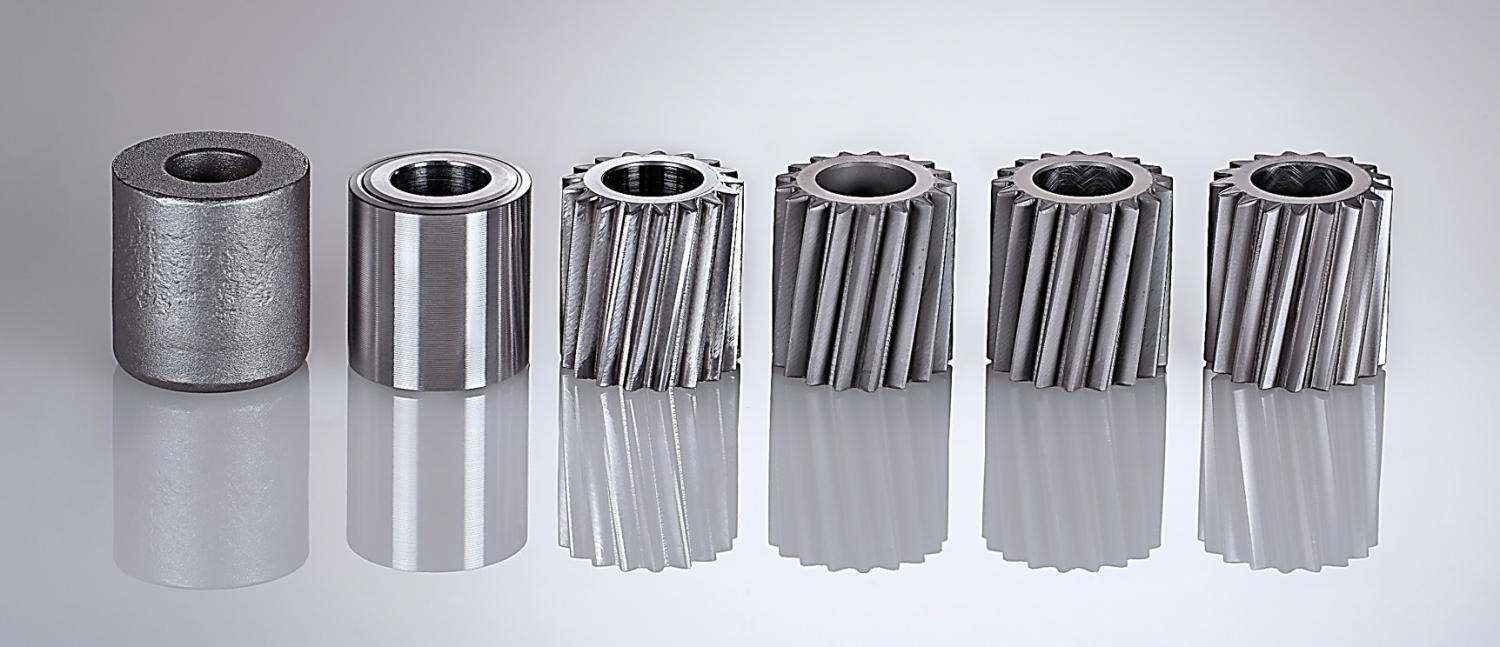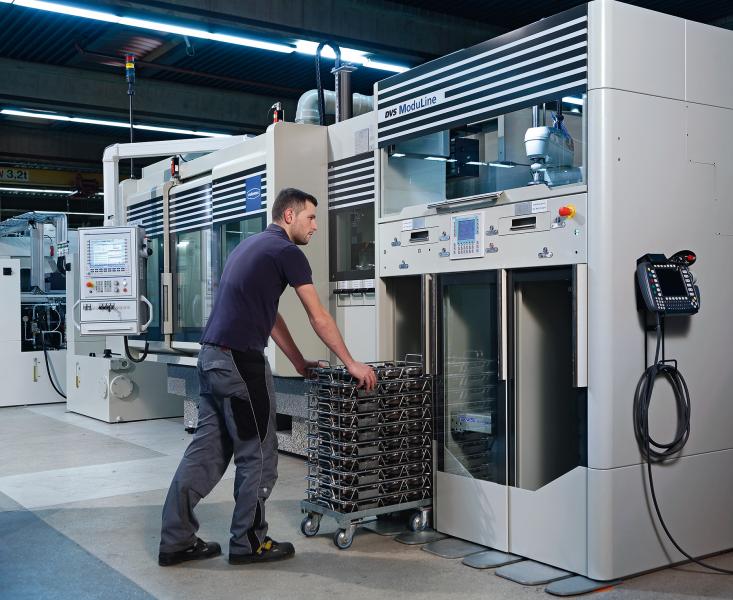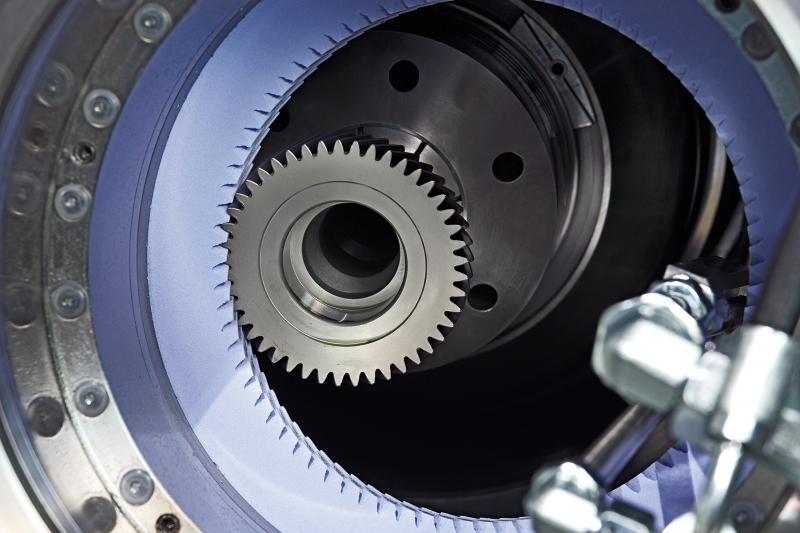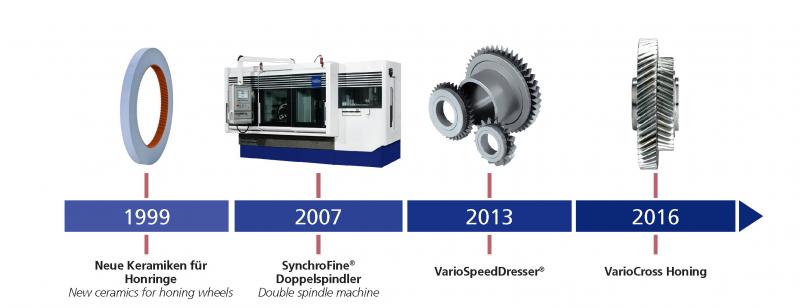The demands made by the automotive industry on the gearing quality of gearbox components have increased continually over the past few years. The reduction of noise emissions in the gearbox, lower component wear and more precise power transmission are reasons for this effort. Another aspect which is increasing in relevance is the minimisation of churning losses and the higher-order objective of thus saving even more fuel. As the market and technology leader for power honing, PRÄWEMA Antriebstechnik in Eschwege has developed a new process which promises even more precise machining results.
If the development of power honing technology over the past few years is considered, various development stages which were crucial for the success of the technology become apparent. One first major milestone was the development of new ceramics for the honing tool as the basis for competitiveness due to low tool costs. Shortly afterwards, PRÄWEMA introduced a SynchroFine honing machine with two spindles, the so-called double-spindle machine. This led to a reduction in cycle time by more than 10 seconds to only 16 seconds per component and further decreased unit costs. In terms of gearing quality, the development of the VarioSpeedDresser®, or VSD for short, made a decisive contribution to the high-precision machining results for a Rz of 1.5 μm currently being achieved. Besides greater dressing precision being possible, the advantage of the defined PKD-coated cutting edge of the VSD dressing tool compared to conventional diamond dressing tools is that individual corrections can be made to the gearing geometry without having to manufacture a new dressing tool. This includes all width corrections such as crowning, tapering and offset. Another advantage is that the fHαvalue can be corrected individually.
Rz <1 μm is required
The importance of this development progress can be seen in the continual increase in demand from the global automotive industry for power honing machines from PRÄWEMA. The expectations and requirements of the industry on the machining results have increased at the same rate, with the objective of minimising friction losses and wear of pairs of gears in the gearbox. In addition, manufacturers aim to reduce churning losses. To achieve these objectives, the industry requires the roughness value (Rz) of the tooth flank surface to even out at less than 1 μm. It seems likely that grit size has a significant influence on surface roughness. For this reason, PRÄWEMA carried out various tests with honing rings of different grit sizes. The honing parameters and dressing parameters were not changed. The results were very disappointing. The use of finer grinding grit did not improve surface roughness at all. What was established, however, was that the use of fine grit involves increased machining pressure and a reduced dressing cycle. Further developments in this field were thus postponed for the time being. The further procedure for reducing the Rz value covered different dressing parameters in the first step. This did not lead to any significant success either. However, PRÄWEMA developers did recognise that the average Rz values of around 1.5 μm are reproduced from the topology of the honing ring gearing (grinding or honing traces of the cutting grain on the workpiece) through optimum dressing with the VarioSpeedDresser®. The objective could now be defined more precisely. To further improve the roughness values, a way of “blurring” the machining marks occurring in the surface had to be found.
Oscillating movement brought success
Intensive tests with oscillating movements finally led to the decisive step forward in terms of development. This resulted in the special oscillating method named VarioCrossHoning, through which the Rz value was able to be reduced to approx. 1 μm. There is one disadvantage to the new method, however. The additional oscillating movement extends the sparking out time. This is why an additional machining time of 4-5 seconds has to be added at the current stage of development of VarioCrossHoning. A deficit that PRÄWEMA is working on solving through further development work.






 Germany
Germany 